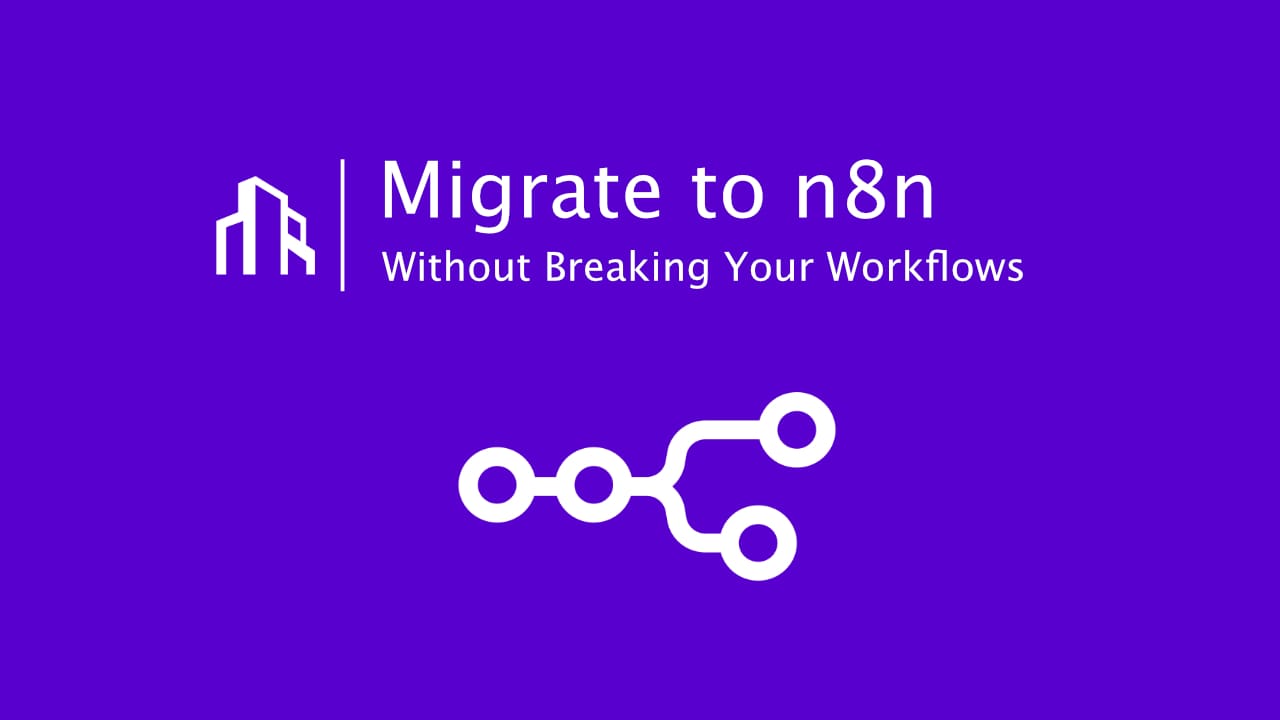n8n Migration Guide: A Practical Workflow Migration Framework

Why Teams Are Migrating to n8n
Make.com is a great starting point, but fast-growing teams often hit limitations. That's where n8n comes in offering more freedom, control, and scalability:
- No vendor lock-in thanks to open-source architecture
- Self-hosting support for compliance and data control
- Unlimited executions, no per-operation billing
- Flexible logic with custom nodes and fine-grained error handling
Want to compare platforms in more detail? Check out our full analysis.
Key Technical Differences You Should Know
Before migrating, keep these in mind:
- Execution Model: n8n processes node-by-node with state retention.
- Authentication: More flexible, but requires custom OAuth/API headers.
- Error Management: Offers try/catch logic, fail paths, and retries.
- Observability: JSON-level logging lets you debug with surgical precision.
Sample Flow: Lead Capture & Enrichment
| Make Flow | n8n Flow |
|---|---|
| Webhook → HTTP → Router → Gmail → Airtable | Webhook → HTTP Request → IF → Gmail → Airtable |
The outcome is the same — but in n8n, you own the logic from end to end.
Real-World Use Cases for n8n Migration
n8n isn’t just a tool — it’s a strategic upgrade for teams who want to own their workflows instead of renting them.
Here are some examples of where migrating to n8n adds immediate business value:
- Marketing teams can build attribution flows across ad platforms, without hitting operation caps.
- Customer service teams can automate ticket routing, Slack alerts, and CRM updates — all within a fully auditable, internal environment.
- Ecommerce brands can automate order enrichment, shipping updates, or inventory syncing with zero latency and full control over edge cases.
- SaaS companies can integrate user onboarding, billing, and email systems with developer-friendly branching logic.
And because n8n supports both internal logic and external API calls, you can run powerful integrations across your stack — without needing to involve five different vendors.
Also See: Laravel to n8n
Benefits for Key Stakeholders
Migrating to n8n isn’t just a tech upgrade — it impacts your entire team:
- CTOs gain more control over where and how data flows
- Developers can version control and deploy workflows like real software
- Ops teams reduce tool fragmentation and manual patchwork
- Security leads can enforce compliance through self-hosting and audit logs
- Finance can forecast costs clearly (no “per run” surprises)
Strategic Fit for Scaling Teams
If you're scaling fast, technical debt is your enemy. n8n gives you the foundation to grow without revisiting the same automation problems every 6 months. By rebuilding your workflows with intent and clarity, you create a system that can scale with your team — not against it.
Migration Strategy: Step-by-Step
- Audit – Identify mission-critical workflows
- Categorize – Group by complexity and usage frequency
- Rebuild – Start with simple flows using n8n’s visual editor
- Test – Run n8n flows in parallel with Make
- Switch – Transition endpoints and disable Make flows once stable
Pro Tip: Use this period to refactor inefficient logic and document triggers for long-term maintainability.
Platform Comparison at a Glance
| Feature | Make.com | n8n |
|---|---|---|
| Hosting | Cloud only | Self-host or cloud |
| Pricing | Per operation | Unlimited (self-hosted) |
| Custom Nodes | Limited | Fully supported |
| DevOps Support | Minimal | Git, CLI, CI/CD |
| Error Handling | Basic | Advanced logic control |
| Logging | Module-level | Node-level with data access |
When It Makes Sense to Stay on Make
You may want to stay with Make if:
- Your flows are infrequent and lightweight
- Your team lacks development resources
- Compliance and data locality are not critical
- You rely on prebuilt templates without customization
Otherwise, n8n gives you the power and autonomy your growth demands.
Ready to Take Control of Your Automation?
If you're serious about automation, it's time to stop duct-taping flows and start building robust, scalable, and secure workflows in n8n.
Need Help Migrating?
Our team has migrated dozens of complex workflows for scaling teams and agencies and we can do it for you too.
n8n Migration
Moving from or to n8n? Scalevise helps you migrate workflows without downtime, data loss, or hidden costs. Our experts streamline the transition so your automations keep running smoothly.
- ✓ Full migration planning & execution
- ✓ Optimize workflows for cost & performance
- ✓ Senior automation specialists
